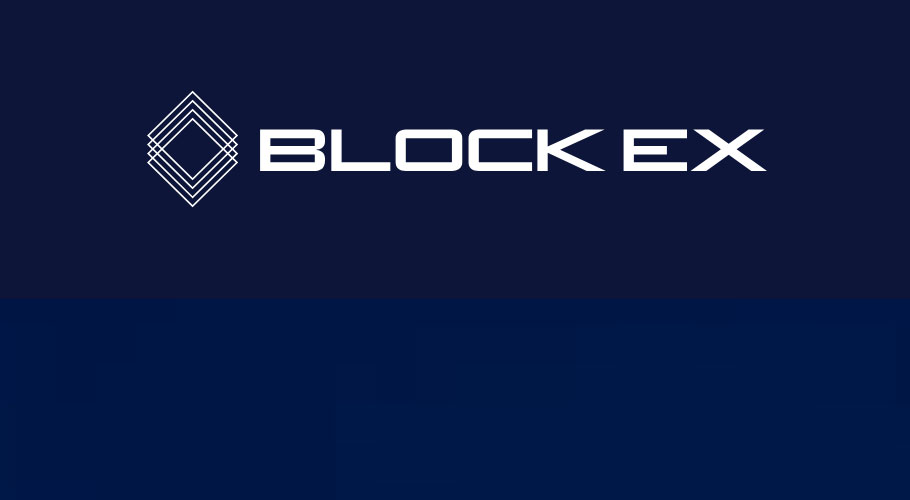BlockEx, a digital asset exchange provider has unveiled its new ‘Carbon Blue’ release, the most significant upgrade to its exchange platform to date, and includes a significantly enhanced BlockExMarkets.com brokerage service.
Carbon Blue delivers a brand new user interface centered on a new trade room with a ten times increase in performance. A primary listing cart and enhanced KYC flow streamline the ICO issuance process and include a new ‘flash sale’ feature.
A new crypto-to-crypto trading engine supports the release of new secondary market tokens, including RCC, LOCI, with more tokens coming soon. Token purchases can be made directly in fiat currencies and minimum deposit limits have also been reduced.
“We’re very excited about the Carbon Blue release to our award-winning platform. It is a major milestone for BlockEx that is the culmination of many months of work. It delivers a wealth of capabilities to BlockExMarkets.com, built around a new trade room, including new crypto-pairs, and exciting primary and secondary listing features. It is also built on a new ‘evergreen’ architecture that allows us to slipstream in the many upgrades we have planned over the next year.”
The Carbon Blue release includes the following key enhancements:
- Streamlined onboarding: Improved sign-up, KYC processes, and technology allow traders to get up and running more quickly and easily. Additionally, minimum card deposits have been reduced from EUR500 to EUR250 to help more new traders to get started.
- Comprehensive primary listing service: ICO token purchases are now more efficient and a new Multi-Rounds feature allows for multiple parallel offers for the same token, including flash sales during private, public and general sales.
BlockEx Carbon Blue FAQs
- Why have you named this release Carbon Blue?
This is BlockEx’s largest software release since we unveiled our platform at the end of 2017. Naming the release helps signify that it delivers a large leap forward in functionality. The name Carbon Blue was taken from the colors of an early design skin concept that our designers worked on, as part of providing better clarity for traders in the trade room. - What is a skin?
We use the term “skin” for the user interface that traders see. We’ve developed a range of skins for our exchange platform, and different brokerage brands can use different skins to represent their brands. - What is the difference between an ‘exchange’ and a ‘brokerage’?
BlockEx develops and operates an asset management and trading exchange platform that allows the listing and trading of digital/crypto assets. Brokerages are specific service brands that sit on that exchange platform. While each of these is a distinct brokerage, liquidity is pooled across the exchange network. - What is pooled liquidity?
A pooled liquidity network provides a single trading marketplace across a number of different brokerages. This means there is a larger market for buyers and sellers than anyone exchange could support. The BlockEx platform uses pooled liquidity to share a market across all of the brokerage brands that use our platform. - How many other brokerages use the BlockEx exchange platform?
Our own BlockExMarkets.com runs on our exchange platform. We have another half-dozen white label brokerage partners that are currently in soft-launch. We expect them to go fully live in the 60 days following the Carbon Blue release. - What are the most important new features in Carbon Blue?
Traders and our white label partners will appreciate the new trade room, high-frequency trading (HFT) performance increase, slicker user interface, new crypto pairs, minimum card deposit reduction, and KYC improvements. Our ICO partners already tell us they like the improved ICO purchase cart and social team icons. - What are the mobile improvements in this release?
Major upgrades to the mobile experience weren’t a specific focus of the Carbon Blue release. However, there are some minor updates. After customer requests, we’ve made market information visible on the mobile navigation menu. Additionally, the mobile look and feel have been updated with improved navigation to make it consistent with the desktop platform. Looking forward, we have a series of additional upgrades planned over the next 6 months which should bring a richer mobile experience. - How quickly will you bring more secondary token listings onto your platform? How do you choose them?
We have a target list of more than 50 secondary tokens identified for our pipeline. We will seek to bring them on as quickly as we can. Configuring them in our system is straightforward, but we want to select tokens with a strong proposition, that has a vibrant community, and a good number of would-be purchasers who want to purchase in fiat. Therefore, not all of them will make it onto our exchange. Our recent release of RCC and LOCI are examples of tokens that meet our criteria. We also expect our white label partners to introduce us to tokens that are important to their target segments. - You refer to “evergreen architecture” in your press release. What do you mean by that?
‘Evergreen IT’ is a technical term that describes an approach to IT provisioning, architecture, and operational management that is designed to deliver loose coupling between logically distinct layers of the IT stack. In effect, it is designed to allow companies to be agile in the way they release product components and modules of their platforms. Adopting this IT approach along with Agile Development allow BlockEx to quickly deploy minor weekly updates and larger monthly upgrades more predictably. - What are you working on next?
We have a number of enhancements planned for the Carbon Blue release every month for the rest of 2018. These include a new ‘Quick Trade’ feature, changes to the ICO sales module, support for the YOTI KYC ‘passporting’ system, a replacement of our deposit and withdrawal module, and additional user interface changes.
